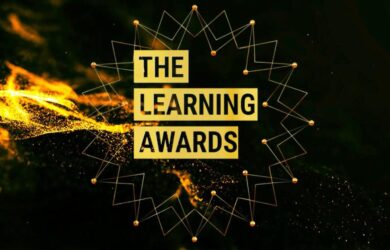When I recently read Pablo Picasso’s quote (below), it reminded me of myself – and how I do, learn, improve. I started driving before I learned how to drive (don’t try that at home!). I made a dress before I learned to sew. And I baked before I learned how to bake.
“I am always doing that which I cannot do, in order that I may learn how to do it.”
Pablo Picasso, artist
About This Week’s Chat
One of my earliest memories of doing before learning is of baking scones when I was about 10 years old. I wanted to bake them to surprise my mother when she returned home.
I always sat at the kitchen table when my mom baked, and I had observed her process numerous times. How she always used a recipe book, how she got all the ingredients and utensils out on the table first, and how she always followed the recipe meticulously. I could vouch for the results… beautiful!
There were a few things I didn’t know, though. I struggled to cut the butter into the flour. And I didn’t know that you shouldn’t handle the dough with your hands too much once you’d added the baking powder. However, I knew exactly how to roll out the dough and use a cookie cutter to cut the scones, because my mom had already taught me.
Try New Things
By the time my mom arrived home, the smell of freshly baked scones welcomed her into the kitchen. They were baked to golden brown perfection – flat, as a result of overhandling the dough, but they tasted OK.
My mom sweetly praised me for my attempt, rather than scolding me for the state of the kitchen (which was a surprise, as it looked like a tornado had just blown through it!). That night at the table, she told my dad how proud she was, and what a good job I’d done. I couldn’t have been more pleased.
Over time, she taught me the finer tricks of baking and cooking. Today, I’m proud to say that I really know my way around the kitchen, and I’m still keen to experiment and try new things.
Have my attempts and endeavors always been successful? I wish! Some of my kitchen disasters were of such proportions that even the dogs wanted nothing to do with them. My gardening flops didn’t live to see another season. And my DIY disasters contributed to a healthy bank balance for the contractors who had to come to my rescue.
Learn as You Go
But my propensity for doing before learning still stands me in good stead. Whatever computer program or application I have to learn, I do so by simply starting to use it. I do, learn, improve.
I learn as I go on, and I’ve often been able to help others because I’ve been through the process of learning from beginning to end. Do I regret that I tend to do first and learn later? Generally, I don’t, but some of my failed projects have worked out rather expensively.
What I discovered from those was the wisdom to know when it’s OK to do and then learn, and when it’s probably better to learn and then do!
Do. Learn. Improve.
During our #MTtalk Twitter chat this week, we discussed the value of a do, learn, improve approach. Here are the questions we asked, and some of your responses:
Q1: What does “learning by doing” mean to you?
@kkopacz1 “Learning by doing” is a hands-on approach to learning, meaning students must interact with their environment in order to adapt and learn.
@thevijaymahajan Learning by doing enables practical involvement of people, both physically and mentally. People won’t get bored as it is realistic and makes learning more user-friendly. It enables one to discover more.
Q2: What are the advantages and disadvantages of “learning by doing”?
@LernChance Advantages: there are things you only can learn by doing them. Like bike riding or falling in love. You can’t “teach” these things. Disadvantages: tasks that require a basic knowledge before doing them. They can’t be learned just doing.
@TheCraigKaye Advantage: learning becomes intrinsic. Maybe risky in some workplaces such as construction and safeguarding.
Q3: Give an example of when you successfully learned something by doing, and what impact that had.
@NWarind Charity! Either you donate time or money, the respect you receive as a payback is worth every second or penny.
@BrainBlenderTec I build tech so it’s always learning what doesn’t work & what does. Also, it’s hard to learn how to dance if you don’t take a step.
Q4: Give an example of when you failed to learn something by doing, and what impact that had.
@MarkC_Avgi I don’t think I ever failed to learn something by doing. Even if I failed at what I was doing, I learned from that failure & gained that knowledge for the next attempt at what I was doing again or, perhaps, applied it to something else.
@Midgie_MT The example that comes to mind is when I experienced a problem with my printer. It no longer was responding to my computer and I tried everything I could think of! The result was lots of frustration and finally reaching out asking for help!
Q5: In what situation would “jumping in” not be the best approach?
@PmTwee Without prior knowledge and not understanding the situation, “jumping in” is not advisable.
@harrisonia If you can’t swim, don’t jump into the water to save somebody – especially if they’re heavier than you!
Q6: How can you minimize the risks of “learning by doing”?
@CaptRajeshwar The army trains very hard in times of peace to ensure less fatalities in operational situations.
@SanabriaJav Having a mentor who you can ask a lot of questions can mitigate the risks of learning by doing.
Q7: How can you best reflect on what you’ve learned?
@PG_pmp By sharing what you’ve learned, and guiding others.
@carriemaslen After your accomplishments (no matter the outcome), ask yourself & others: What worked that I should do more of? What didn’t work that I should change or stop doing?
Q8: Can anything and everything be learned by doing? Why?
@kkopacz1 No. You wouldn’t want a surgeon operating on you without a degree!
@Yolande_MT Some things might not have disastrous consequences, but it could slow down a project or negatively impact on a team goal.
Q9: How happy are you with your team learning in this way?
@MicheleDD_MT I encourage experiential learning as an element of a development plan. If the task is not too complex and the risk is managed, it is a terrific way to build confidence & grow skills.
Q10: How can we complete the loop – do, learn and improve?
@harrisonia To complete the loop of doing, learning, and improving we should: document our progress, share best practices, seek efficient methods, and solicit feedback from team members and leaders.
@Midgie_MT We can complete the loop by reviewing the actions we took to determine whether we can do things better the next time.
To read all the tweets on our do, learn, improve topic, have a look at the Wakelet collection of this chat here.
Coming Up
It’s easy to make assumptions about other people’s behavior. It’s just as easy to jump to conclusions about their motives, based on your perception of their behavior. The topic of our next #MTtalk chat is, “What’s Your Motive?”. We’re going to discuss how to examine and be honest about our own motives.
In our Twitter poll this week we’d like to know why you “second guess” some people’s motives. Please cast your vote here.
Resources
In the meantime, here are some resources relating to the topic we discussed this time:
(Please note: Club and Premium Club members can enjoy instant access to these resources. Non-members may find access to some of them is restricted.)
Action Learning Sets
Gagne’s Nine Levels of Learning
How to Learn From Your Mistakes
Learning Curves
Engaging People in Learning
Gibbs’ Reflective Cycle
Case Study-Based Learning
Coaching With Feedback




